|
Full resolution versions of wildflower photos available on flickr. 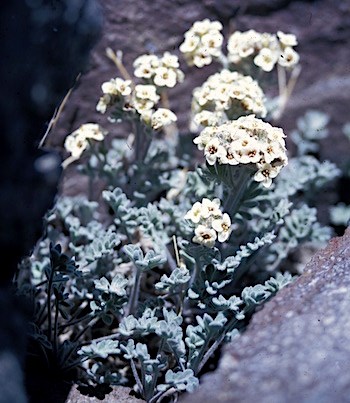
NPS Photo Alpine SmelowskiaSmelowskia calycina 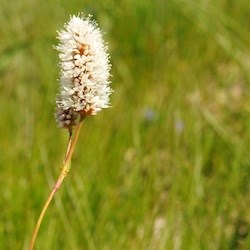
NPS Photo American BistortPolygonum bistortoides Perennial with one to several unbranched flowering stems 8-28 inches (20-70 cm) tall and narrow, oblong basal leaves about 4-8 inches (10-20 cm) long. Very common in subalpine meadows, and can be one of the earliest flowers blooming at Paradise. 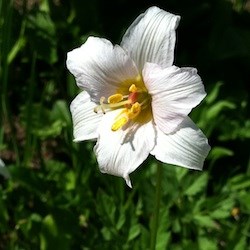
NPS Photo Avalanche LilyErythronium montanum Stems are 6-16 inches (15-40 cm) long, with usually 2-3 flowers each. It takes many years for these plants to begin flowering, but they grow in abundant colonies throughout subalpine regions in the park. They are often the first to flower along the edges of melting snow. Closely related to glacier lily. 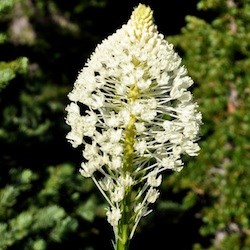
NPS Photo Bear GrassXerophyllum tenax Stems of this tough flower can be 5 feet (1.5 m) tall, emerging from large clumps of grass-like basal leaves. The leaves were historically used by native peoples to weave hats, baskets, and capes. Bears have been known to eat the fleshy bases of the leaves in spring, giving the flower its name. 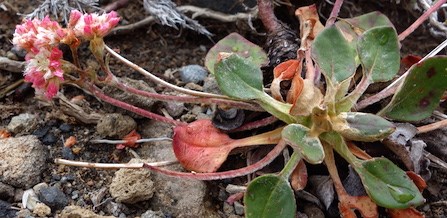
NPS Photo Buckwheat, AlpineEriogonum pyrolifolium This common alpine plant grows in small cushions about 8-12 inches (20-30 cm) across with oval- to elliptical-shaped basal leaves. Leaves have woolly hairs underneath while the top of the leaves are hairless and greenish-yellow. Flowers range in color from white to greenish-white to pinkish-white. This plant is sometimes called "dirty socks" due to the distinctive smell of the flowers. Found on rocky slopes between 5,500-8,000 feet (1,676-2,438 m). 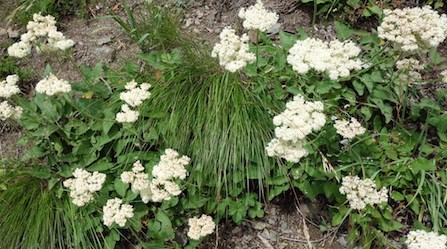
NPS Photo Buckwheat, HeartleafEriogonum compositum This plant's characteristic heart- or arrow-shaped leaves are dark green, hairless on top and with wooly undersides. Creamy white compound flowers top the unbranched, 6-16 inches (15-40 cm) long stems. Found on rocky slopes above 5,000 feet (1,524 m). 
NPS Photo Buttercup SuksdorfiaSuksdorfia ranunculifoliaWhile similar in appearance to saxifrages, this flower is in a different genus that has flowers with five stamens (saxifrages have ten). The flowers are white in flat-topped clusters. Leaves have long stalks and are fan-shaped with three, toothed lobes. Found in wet rocky areas and cliffs, between 3,000-5,000 feet (900-1,500 m). 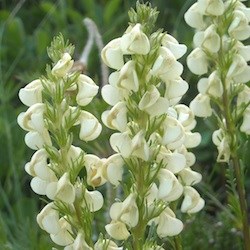
NPS/C. Roundtree Coiled-beak LousewortPedicularis contora Flowers are creamy white, with a large upper lip that curves in a half circle and tucks into the lower lip. This lousewort stands about 6-15 inches (15-40 cm) tall, with slender, mostly basal leaves. 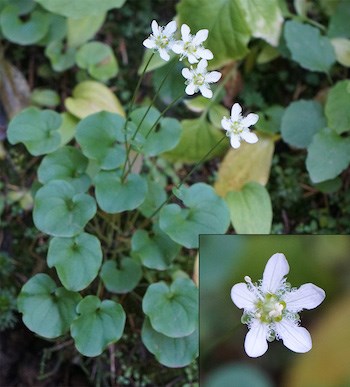
NPS Photo Fringed Grass-of-ParnassusParnassia fimbriata Leaves broad, kidney-shaped on short stalks. Tall flowering stems with a single flower at the top. Flowers are white with five petals. The lower portion of the petal edges are fringed. Very common in wet subalpine meadows above 4,000 feet (1,219 m), though it can be occasionally found at lower elevations such as along Westside Road. 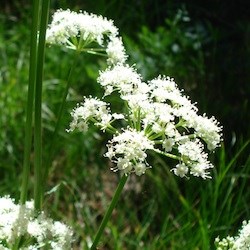
NPS Photo Gray's LovageLigusticum grayi Stems 8-24 inches (20-60 cm) tall, with compound flowers with 7-10 rays. Leaves mostly basal, divided into many toothed leaflets. Widespread in meadows and along streams between elevations of 5,000-7,000 feet (1,500-2,100 m). 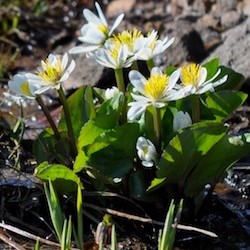
NPS Photo Marsh MarigoldCaltha leptosepala Leaves basal, oval to round with heart-shaped base. Grows in wet meadows, bogs, and stream-sides above 4,000 feet (1,200 m). 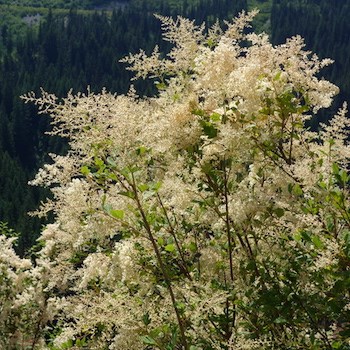
NPS Photo OceansprayHolodiscus discolor 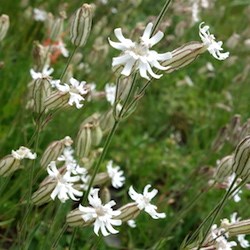
NPS Photo Parry's CatchflySilene parryi Flowers are white, about half an inch long (12-15 mm), and appear 4-lobed at the tip. Mostly basal leaves, with pairs of narrower, smaller leaves on the stems, which grow to be 8-20 inches (20-50 cm) tall. Found above 5,000 feet (1,524 m) on rocky slopes and dry meadows. 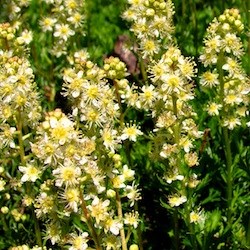
NPS, Steve Redman PartridgefootLuetkea pectinata An evergreen shrub with creeping woody stems that spread out to form mats. Leaves are segmented and form tufts at the end of branches, while flowering stems are 4-8 inches (10-15 cm) tall with dense, terminal flowers. Common in drier meadows and open talus slopes.
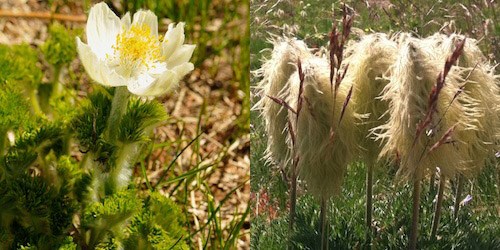
NPS Photo Pasqueflower / Western AnemoneAnemone occidentalis The entire plant is coated in long hairs, with segmented leaves and 4-12 inches (10-30 cm) tall flowering stem. The feather-like "mouse-on-a-stick" seedhead (pictured right) is a common sight in Mount Rainier's meadows. 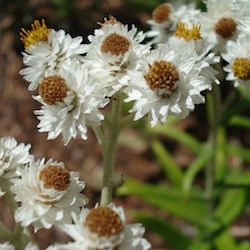
NPS Photo Pearly EverlastingAnaphalis margaritacea Weedlike plant that spreads via rootstock to form clumps of stems 24-40 inches (60-100 cm) tall, with narrow leaves along stem. Leaves are dark green on top, with a white-woolly underside. Numerous, dense flowerheads top the stem. The true flowers are tiny and yellow but ringed in paper-like white bracts (modified leaves). Found throughout the park from low elevations, particularly along roadsides, up to approx. 6,000 feet (1,800 m). 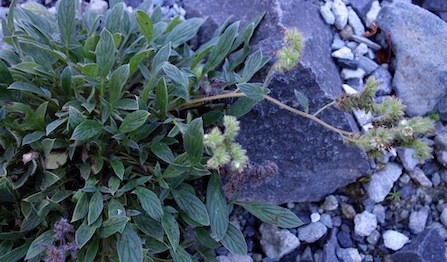
NPS Photo Phacelia, Narrow-sepaledPhacelia hastata var. leptosepala 
NPS Photo Pussytoes, WoollyAntennaria lanataThis plant is named for its woolly basal leaves that are 2-4 inches (4-10 cm) long. The stems have a few smaller leaves and are topped in a rounded cluster of white flowers with dark brown to blackish phyllaries (protective bracts around the flower). Common in subalpine to alpine rocky areas. 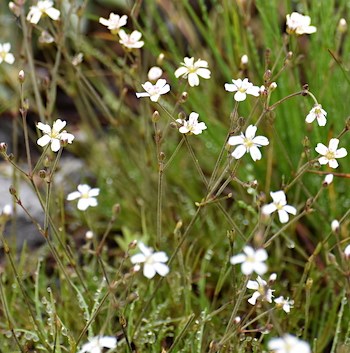
NPS Photo Sandwort, MountainArenaria capillaris 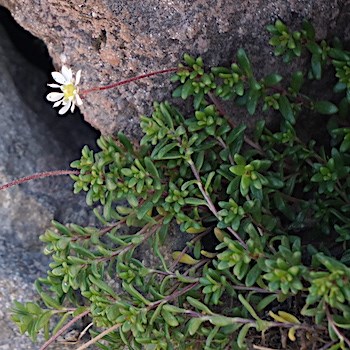
NPS Photo Saxifrage, Tolmie'sSaxifraga tolmiei Forming low mats, this plant has alternating, thick green leaves with inrolled edges. The flowering stems are usually leafless, sparsely hairy, and topped with 1-3 flowers. The flowers have five white petals, but the stamen filaments are wide and can make the flower look like it has ten petals. Common on higher subalpine to alpine talus slopes between 5,500-9,000 feet (1,700-2,700 m) elevation. 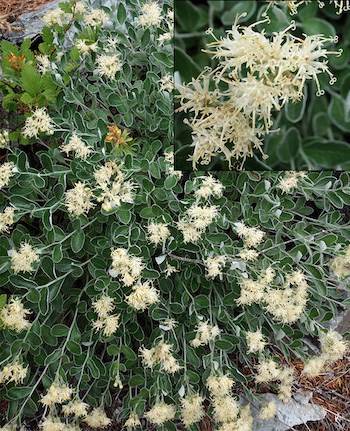
NPS Photo Silverback LuinaLuina hypoleuca Growing from woody rootstock, this plant forms mounds up to 3 feet (1 m) across. Each stem has numerous green leaves that are thickly woolly on the underside. The creamy flowers form disks at the ends of the stems. Common in dry, rocky areas up to 6,000 feet (1,800 m). 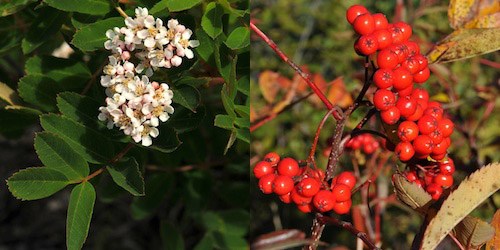
NPS Photo Sitka Mountain AshSorbus sitchensis This six foot-high (2 m) shrub grows in thickets and is widespread above about 4,500 feet (1,400 m). Leaves are divided into 7-9 leaflets, with toothed edges. Flowers in tight clusters at the ends of branches, and produces bright red berries favored as a food source by birds and other wildlife. 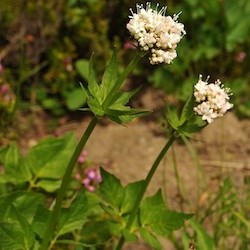
NPS Photo Sitka ValerianValeriana sitchensis Very common in subalpine regions, this flower can often be seen rising above other wildflowers in the meadows. It has hairless leaves and a square stem, and ranges in height from 24-47 inches (60-120 cm) tall. 
NPS Photo Sticky CurrantRibes viscosissimumThis shrub has clusters of 6-12 greenish-white to white flowers with petal-like spreading sepals. Its small, black berries are sticky with numerous bristles. Leaves are hairy on both sides with five, rounded, toothed lobes. Found in dry open woods up to 6,500 feet (2,000 m) on the east side of the park. 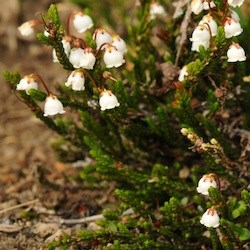
NPS Photo White Mountain HeatherCassiope mertensiana Small, scale-like evergreen leaves arranged in four rows cover stems up to 12 inches (30 cm) long. Common in subalpine parkland, where it can form extensive mats. 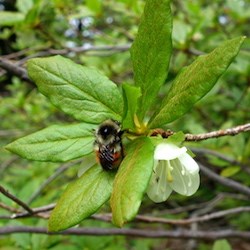
NPS Photo White RhododendronRhododendron albiflorum A common shrub, also known as Cascade azalea, found in the park on open slopes and meadow edges above 3,500 feet (1,066 m). White flowers grow on top of the previous year's growth and tucked underneath the leaves from the current year. It can grow to be 3-6 feet (1-2 m) tall. Return to Wildflower Guide |
Last updated: April 2, 2025
